October 3, 2019
Planting in a Post-Wild World: At Home & Beyond
Documenting wildlife can be mighty tricky, especially when the subject—like a hummingbird—is so tiny.
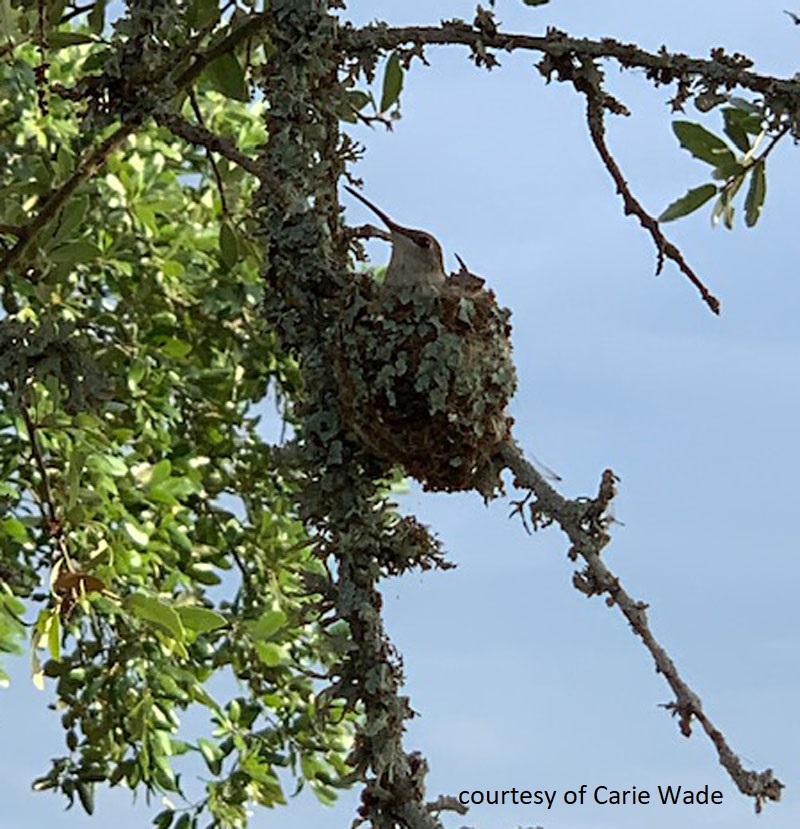
But this summer, Carie Wade spotted a hummingbird in her nest on a bluff at Canyon Lake.
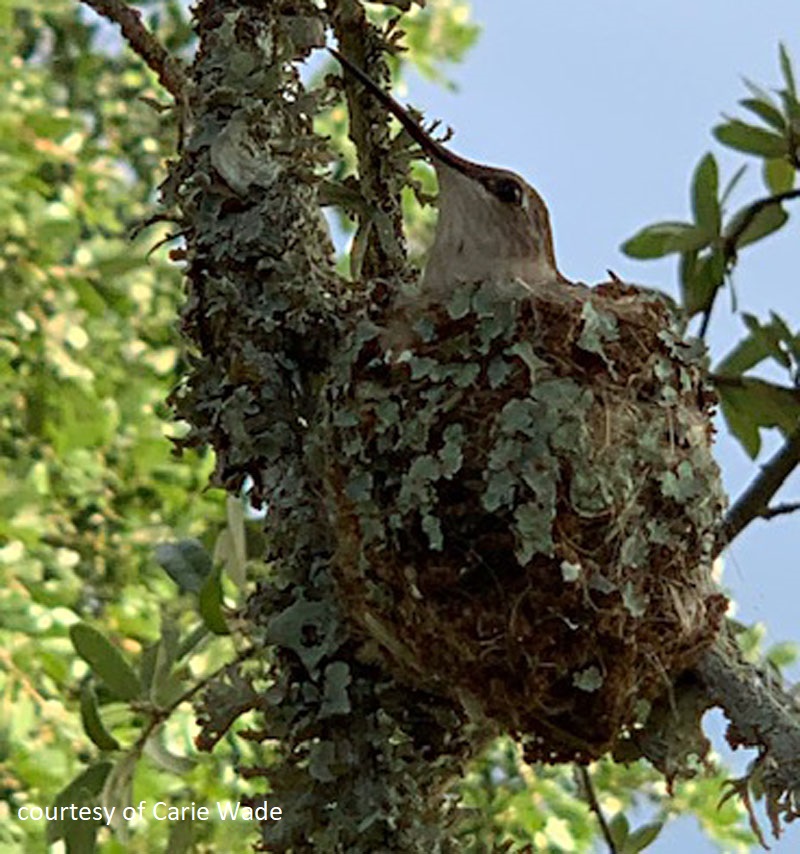
Carie returned again and again to quietly record the unfolding new life. These are just a few pictures from her remarkable photographic story.
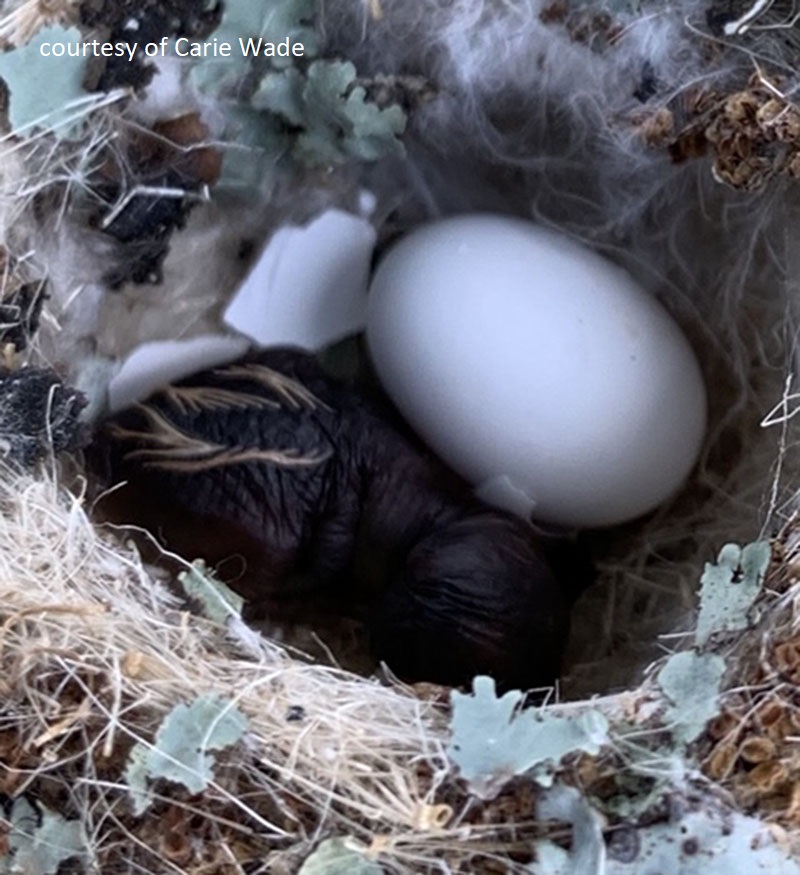
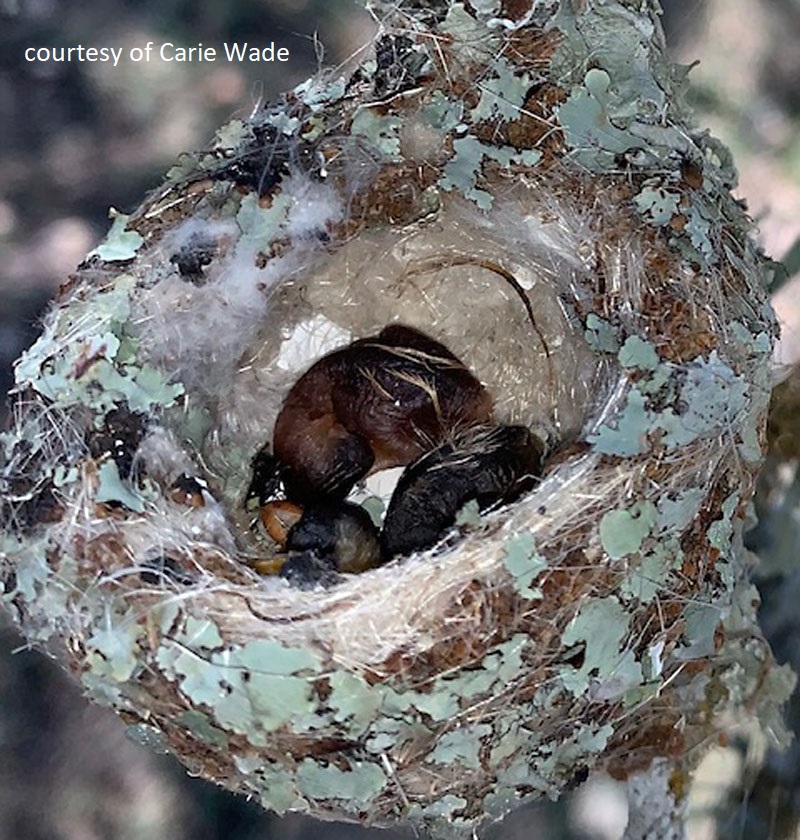
Thank you, Carie, for sharing with us!
As wildlife habitat diminishes, how can we create ecologically-sensitive, biodiverse gardens? Thomas Rainer, Phyto Studio landscape architect based in D.C., is committed to “exploring the intersection of ecology, culture and design.”
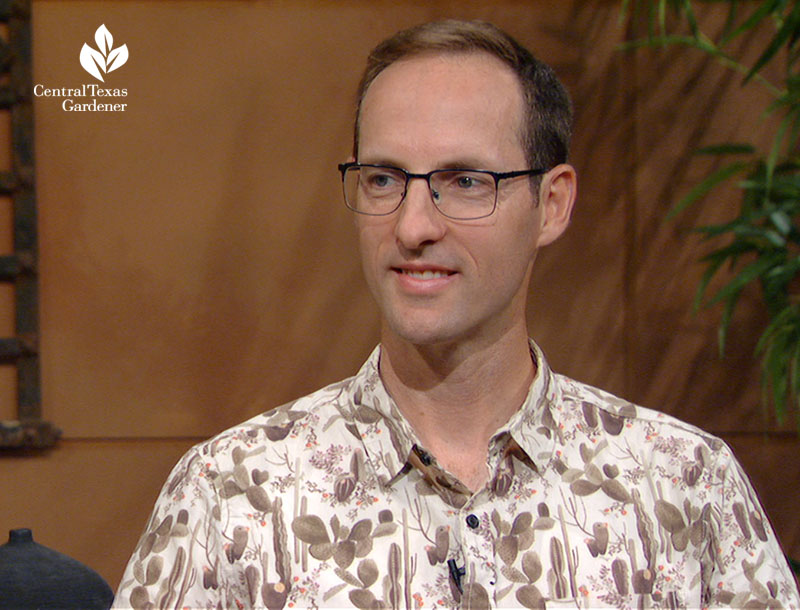
This week, Thomas joins John Hart Asher, Senior Environmental Designer at the Lady Bird Johnson Wildflower Center, who’s filling in for Tom Spencer.
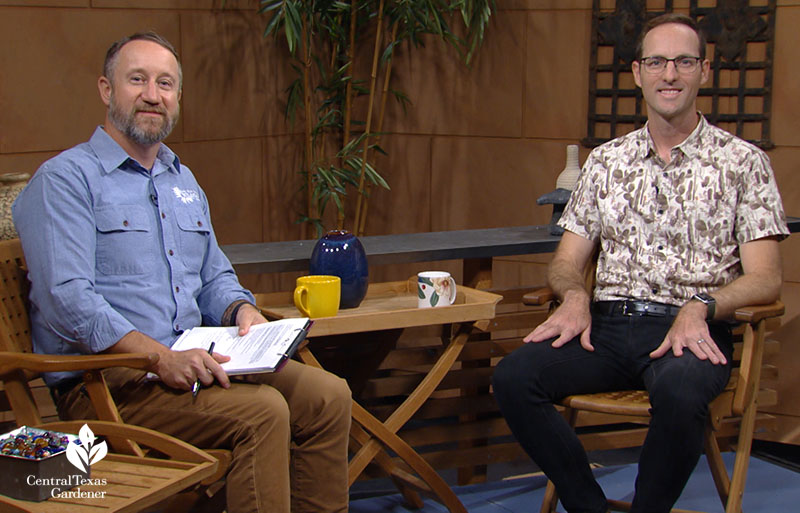
Since they’re both dedicated to attractive ecological design that invites our engagement and restores wildlife habitat, they explore concepts from Thomas’ book, Planting in a Post-Wild World: Designing Plant Communities for Resilient Landscapes. Important to them both is our own health along with that of the environment.
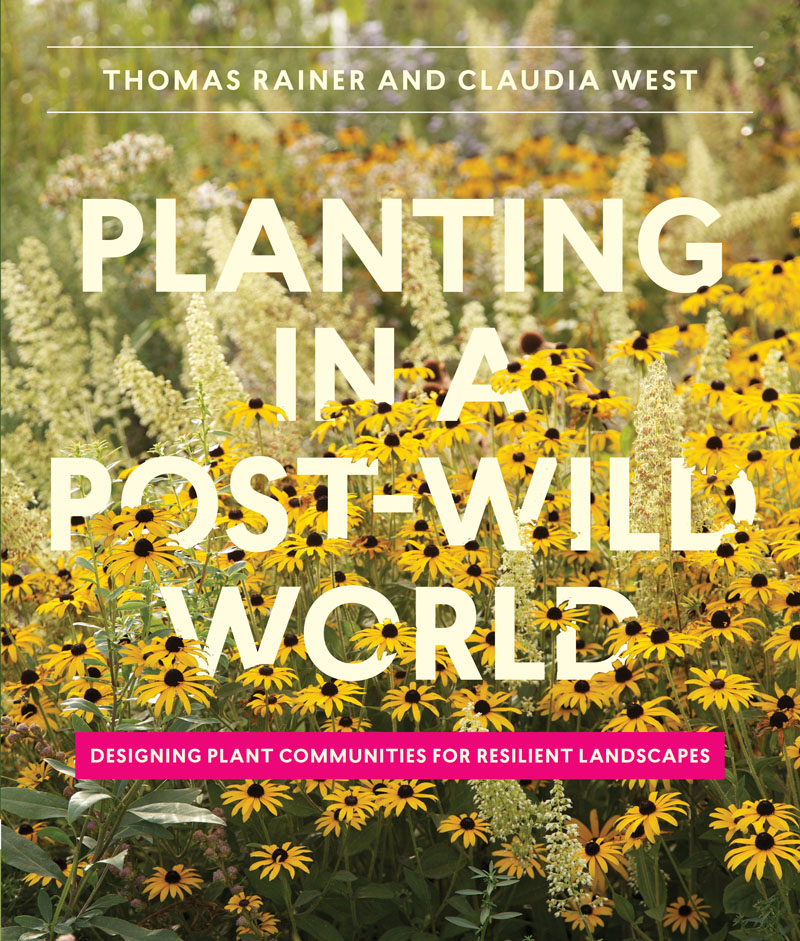
Many thanks to Pam Penick, who featured Thomas in her recent Garden Spark talk series, and suggested this opportunity for CTG!
On tour: In Dripping Springs, Leah and Jon Gillum bring together home, family, and habitat with their children, Grant and Nora.
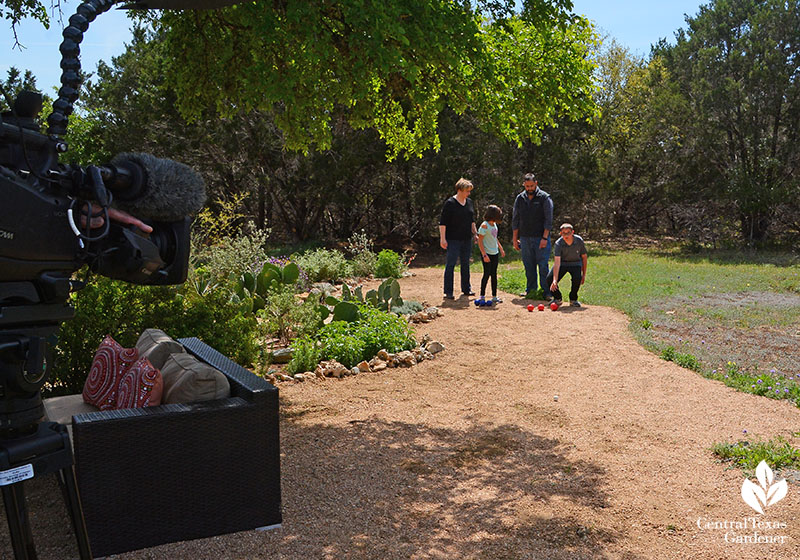
In 2013, when they bought the home and 10 acres of native plant habitat along the Jackson branch of Onion Creek, they wanted sunlight to grow gardens together as a family.
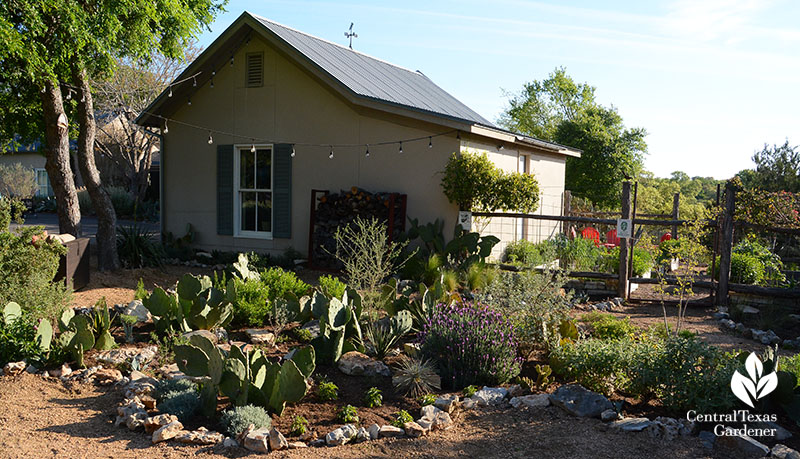
Another attraction was acres of wilderness to watch and learn from wildlife of all kinds; now some of their favorite family stories.
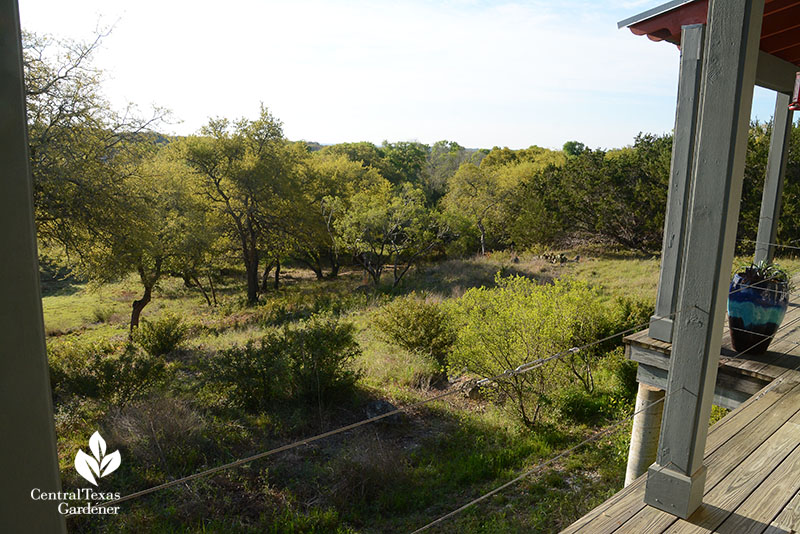
The original owners, Peggy and Jim Budd, built the home in the 90s. Jim, an architect, sited it for minimal impact and to catch soft light indoors.
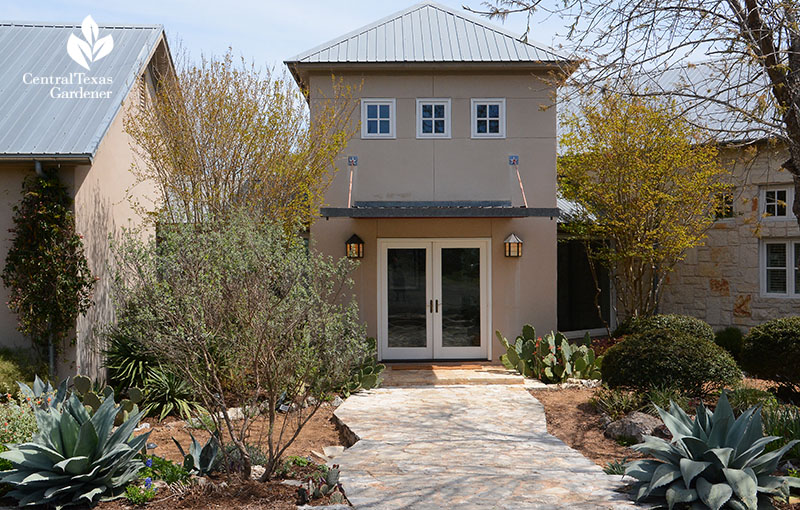
Peggy, former Volunteer Director at the Lady Bird Johnson Wildflower Center, laid out the original backbone with many native plants.
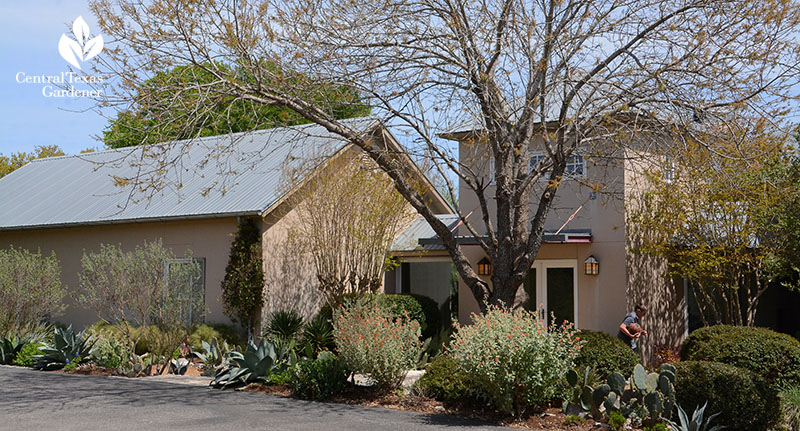
On the sloping lot, they built a dry creek bed to control flooding water near the house.
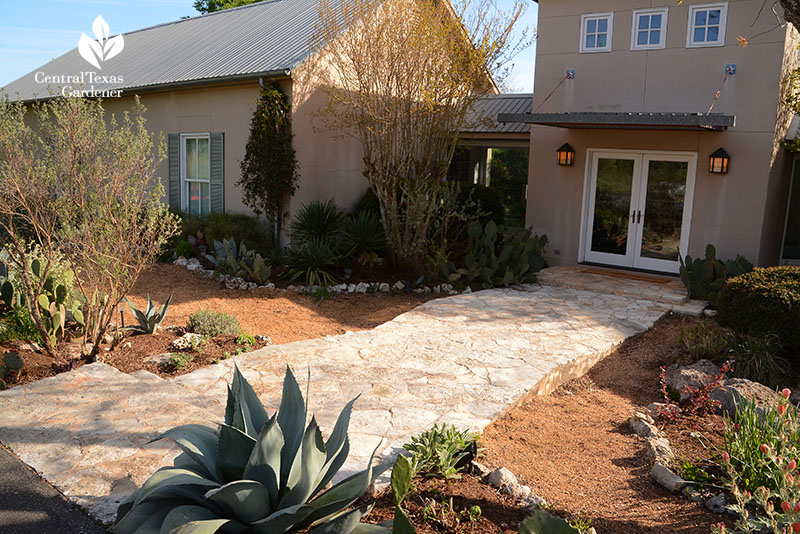
Leah and Jon added plants to the swale and berm design.
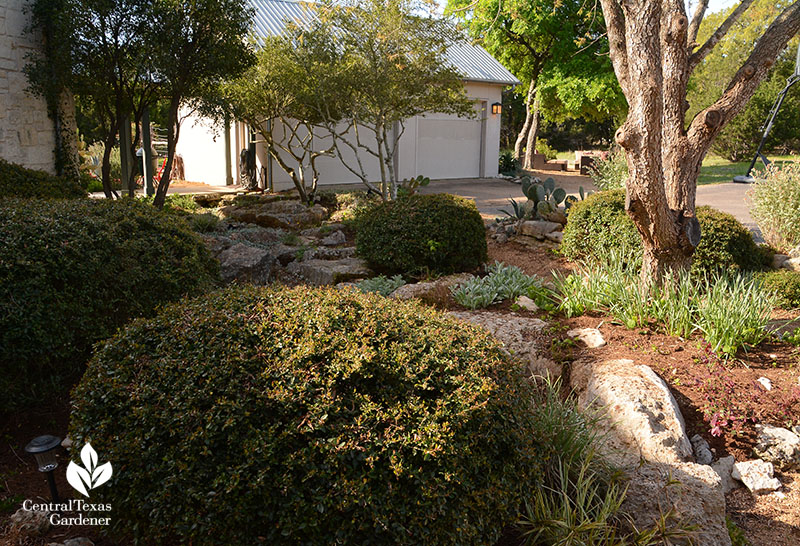
Jon planted native silver ponyfoot (Dichondra argentea) that looks like flowing water between rare but often intense rains.
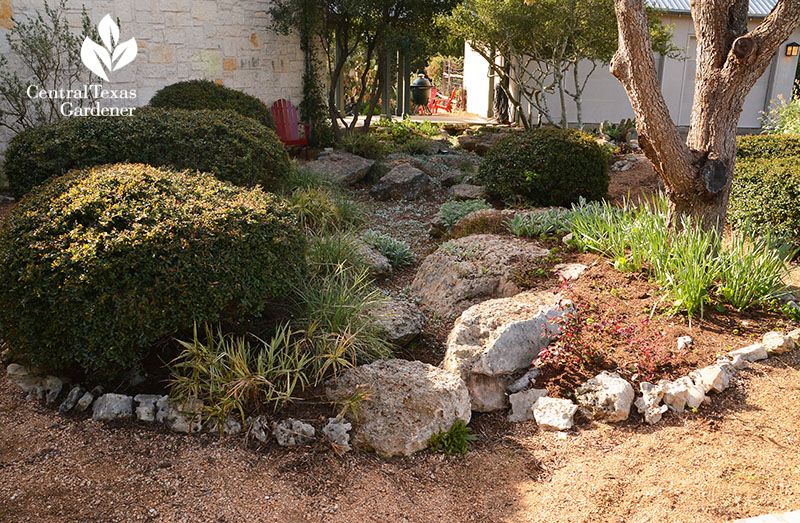
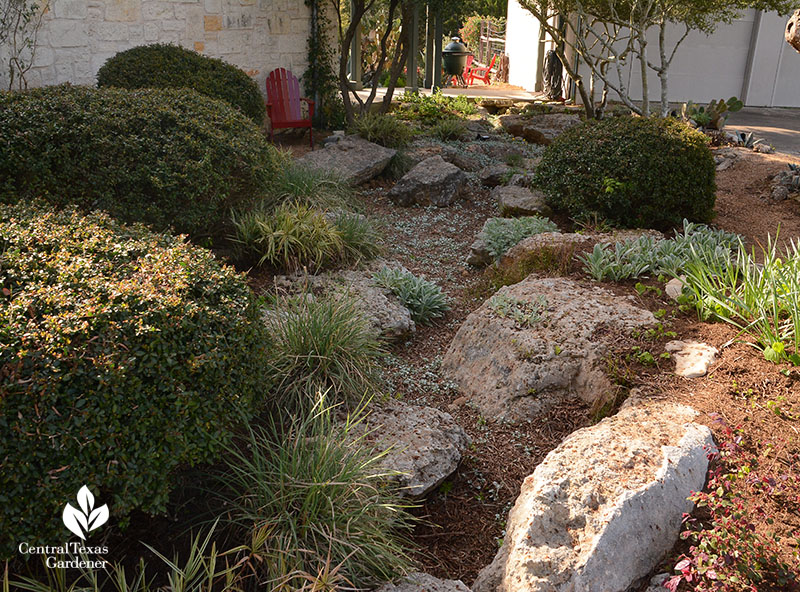
The Gillums are water-resourceful always, but especially now since they’re on a well. Every plant must be able to thrive on limited water. The decomposed granite path along the front allows rainwater to infiltrate and bluebonnets to seed themselves.
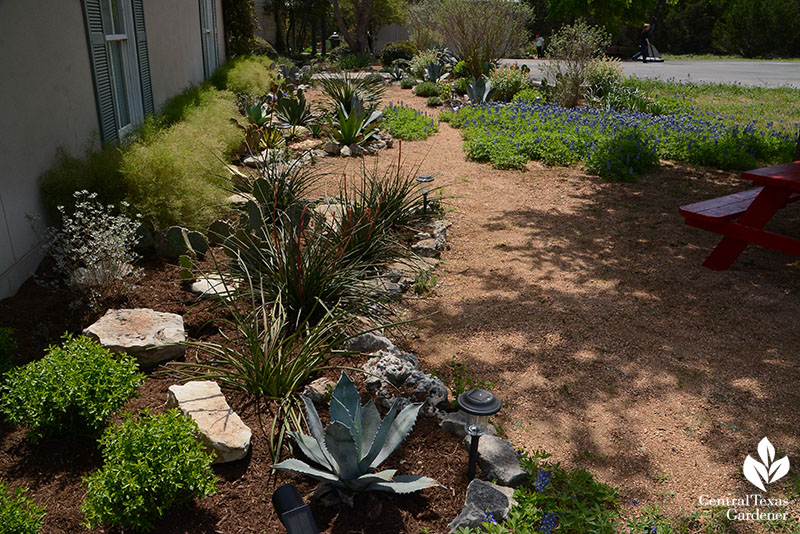
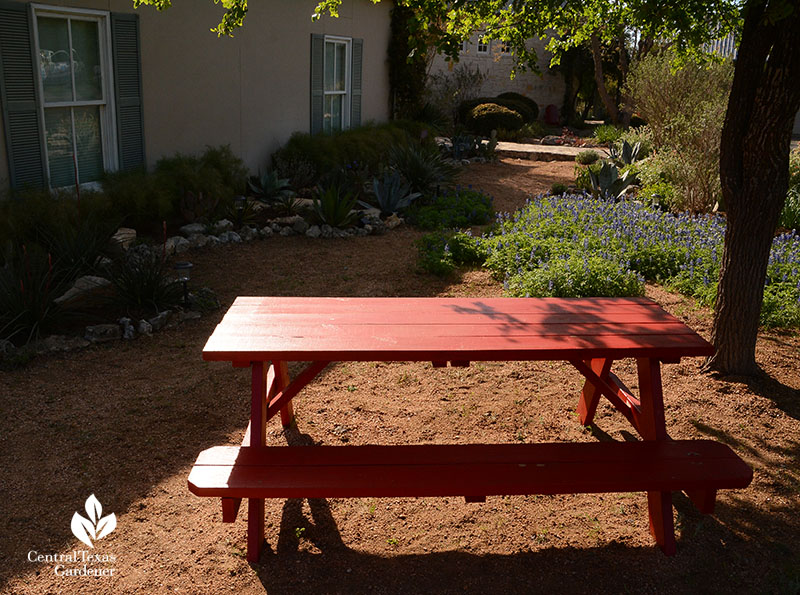
Native wildflowers in all seasons pepper the fields beyond. Leah and Jon seed more every year, but many burst naturally from the soil when conditions are right.
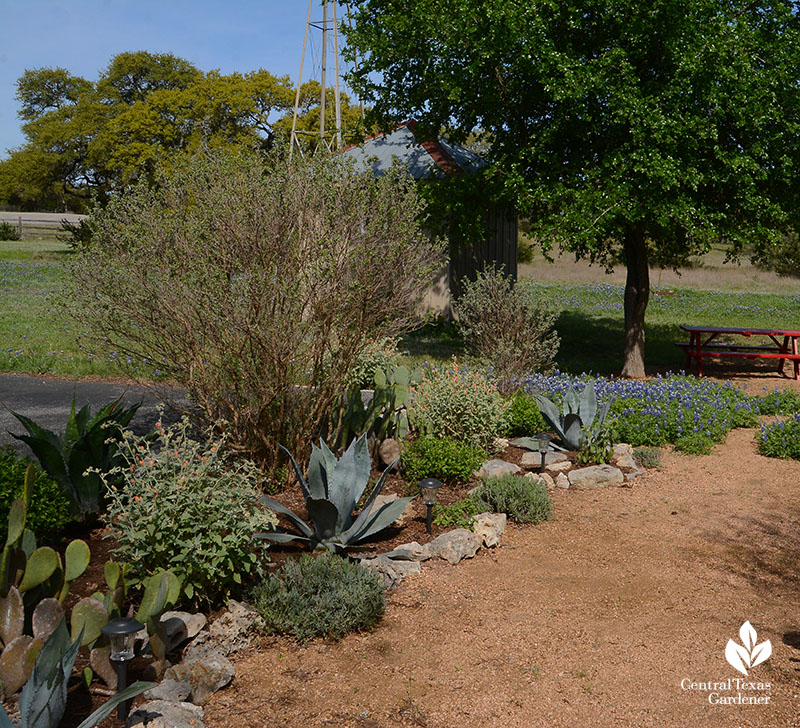
Architect Jim Budd completed his Texas farmhouse persona with a vintage Aeromotor windmill from a farm outside Mason.
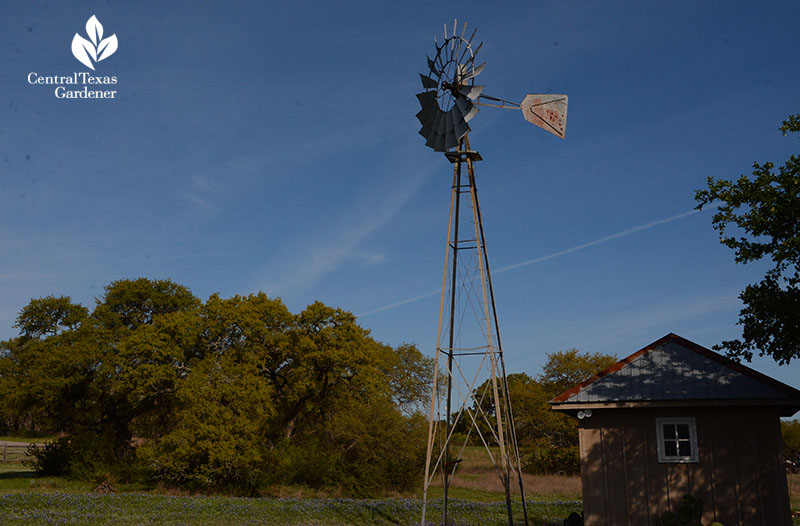
Since deer share the garden, Jon learned the hard way that any addition he makes must be resistant or tolerant to chomping.
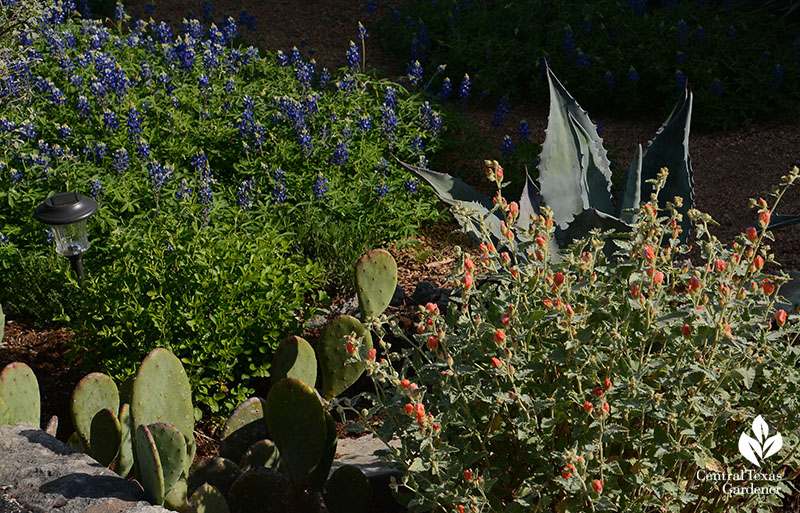
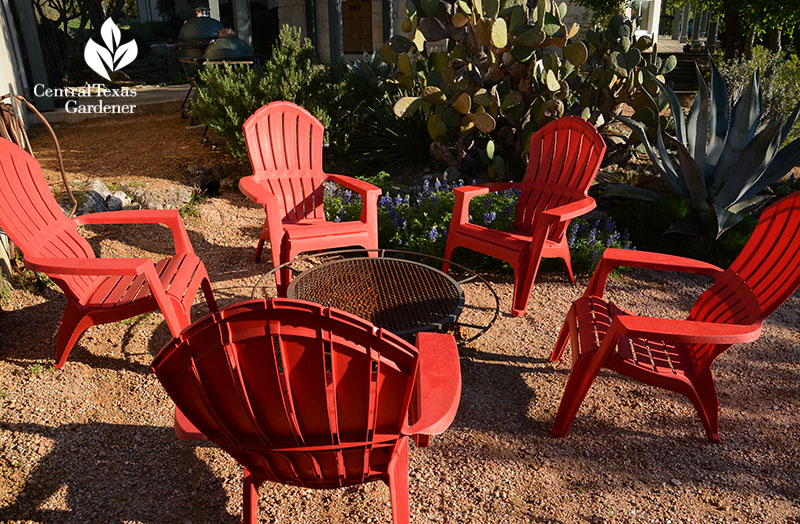
He tells us, “It’s taken a lot of trial and error to build gardens that blend in with the wildscape. And I think one of the ways that we’ve done that is that we use a lot of rocks. We can talk about plants that we think we know how to grow, but we grow rocks really well!”
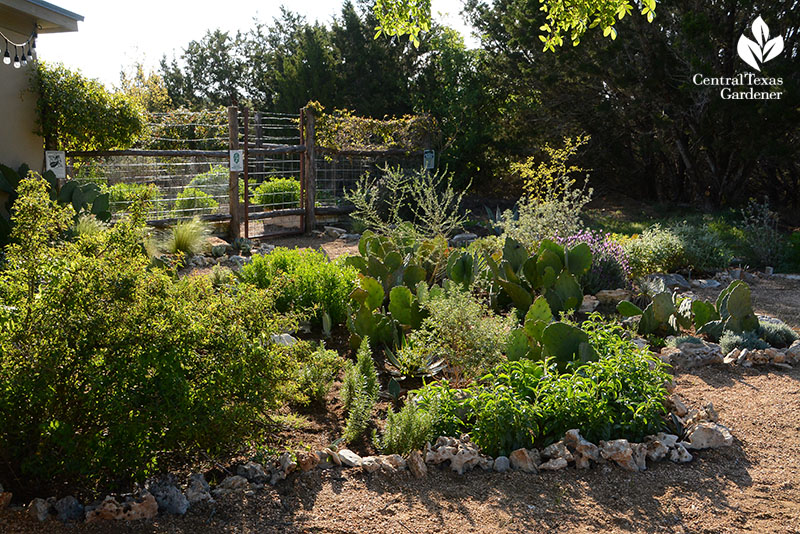
They don’t fence against deer except in two areas. One is their organic vegetable garden where hog panel and rustic cedar posts blend right in.
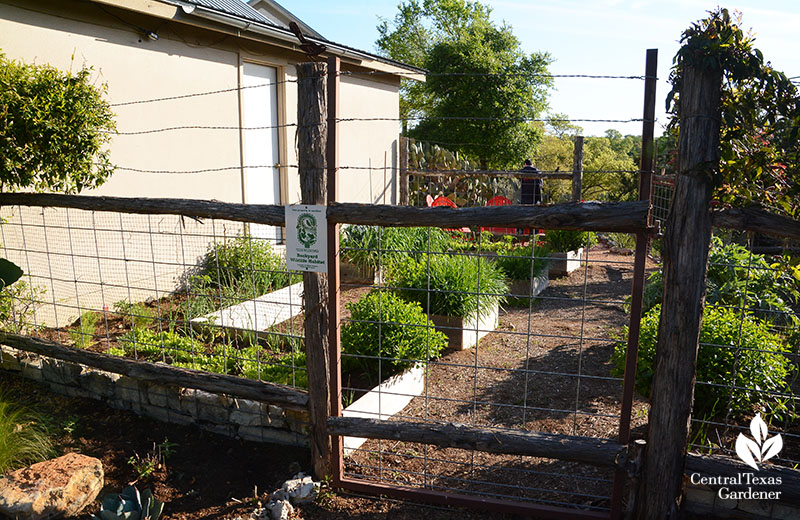
Leah built the raised beds and shoveled yards of soil and compost. They made the paths wide to easily maneuver carts of compost and mulch each season. The whole family pitches in to plant and harvest.
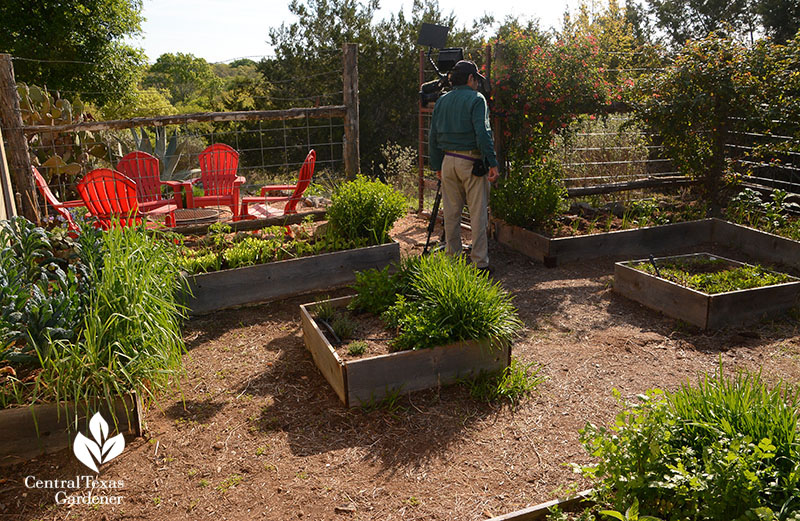
To feed hummingbirds and other pollinators, native coral honeysuckle clambers up.
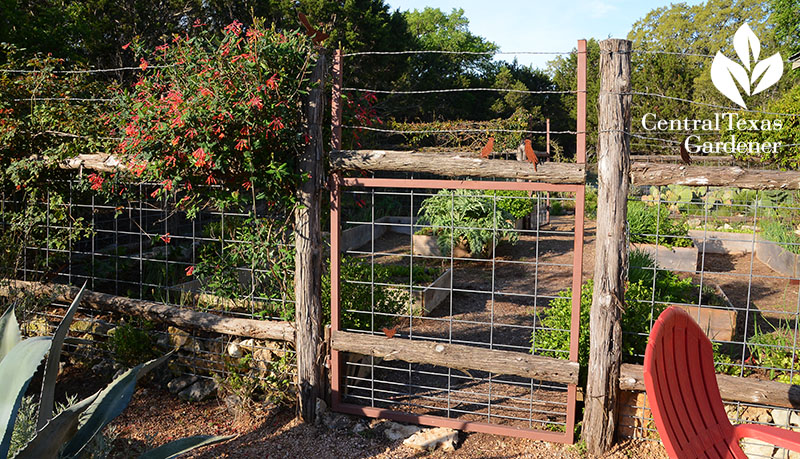
Another fence protects the courtyard garden, visible from several rooms indoors. In our video, you’ll see the clever sliding gate design that Leah and her dad devised.
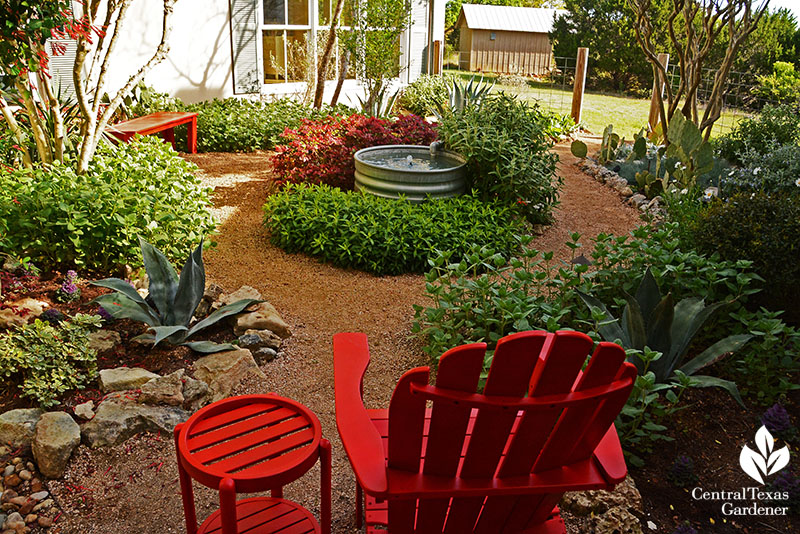
Their challenge here was alternating dramatic sun and shade along with a design that’s pleasing to view inside and out.
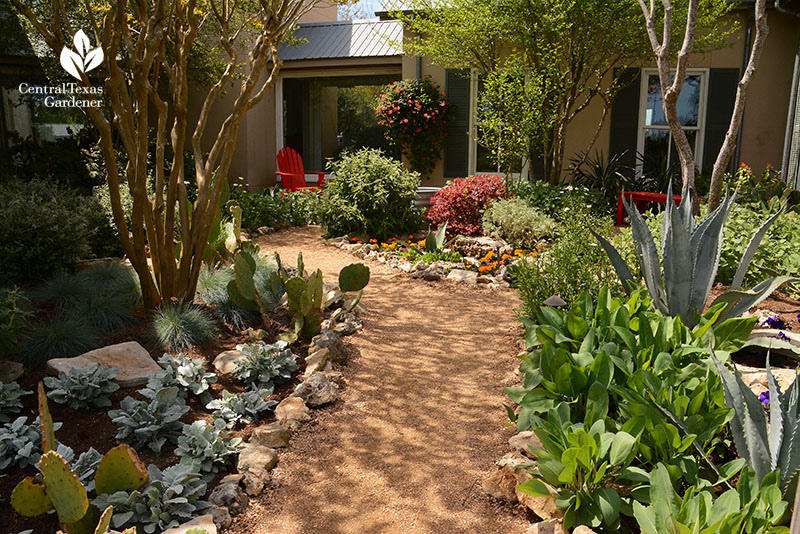
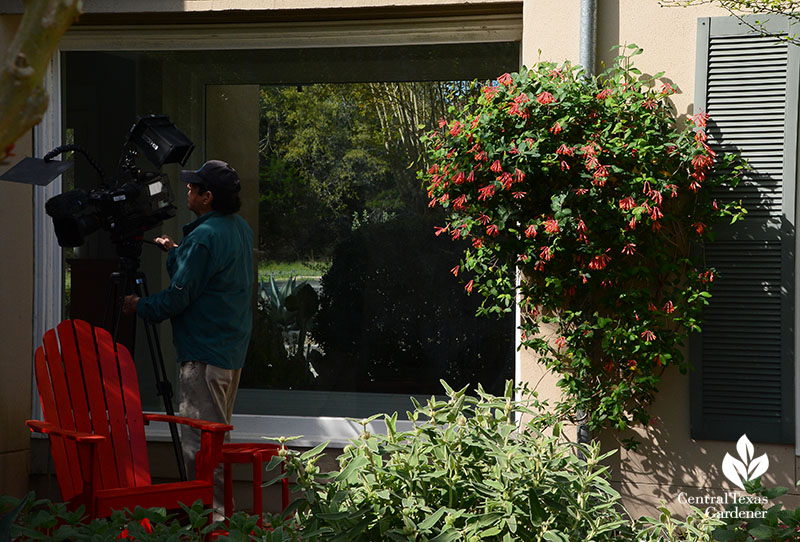
Since they wanted a small, low-care pond to attract wildlife close up, Leah engineered the stock tank pump design.
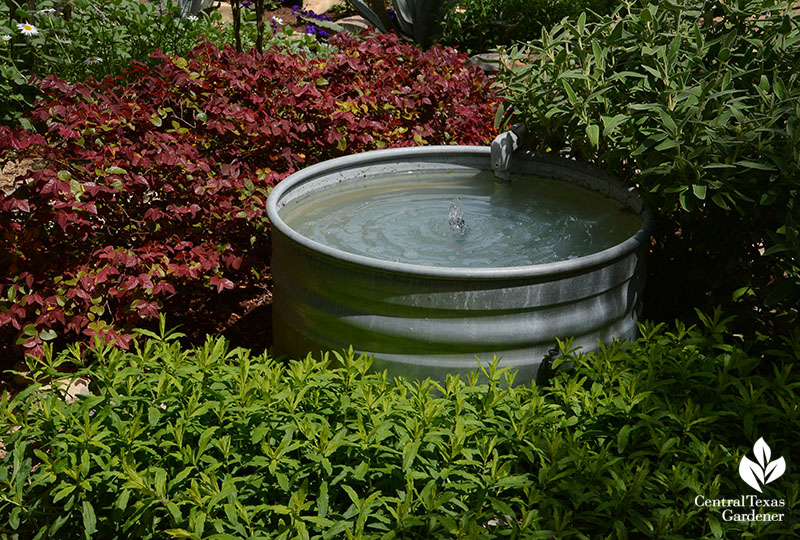
They wanted a bench to sit and watch, so Grant, then five or six, helped Leah build and paint a bright red perch. Nora was too little then, but she gets to build the next one!
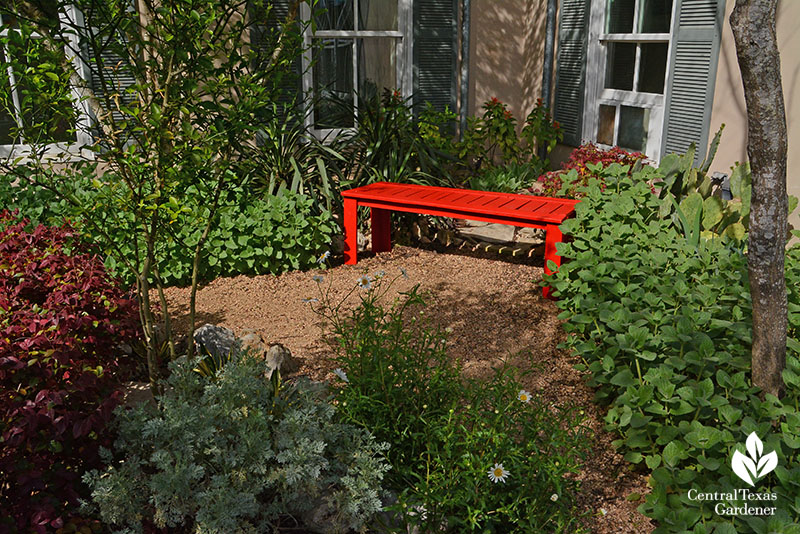
One of their most special plants is one that Peggy Budd planted—Shasta daisies that were a gift from Lady Bird Johnson.
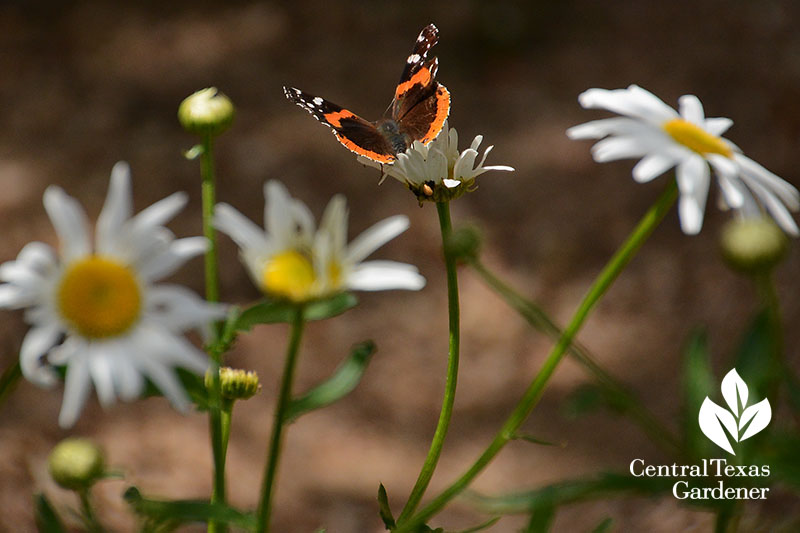
From the farmhouse-style veranda in back, they watch their own reality show of birds, deer, coyotes, foxes, possums and skunks.
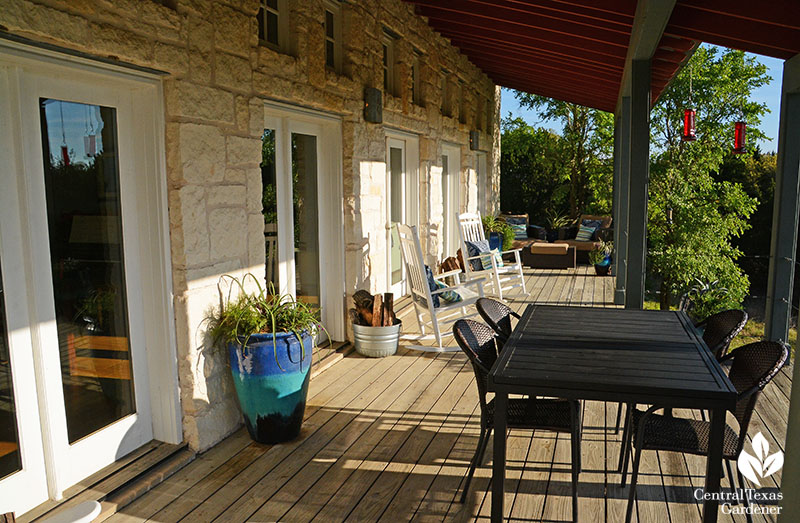
Benevolent native plants document the calendar through ever-changing patterns.
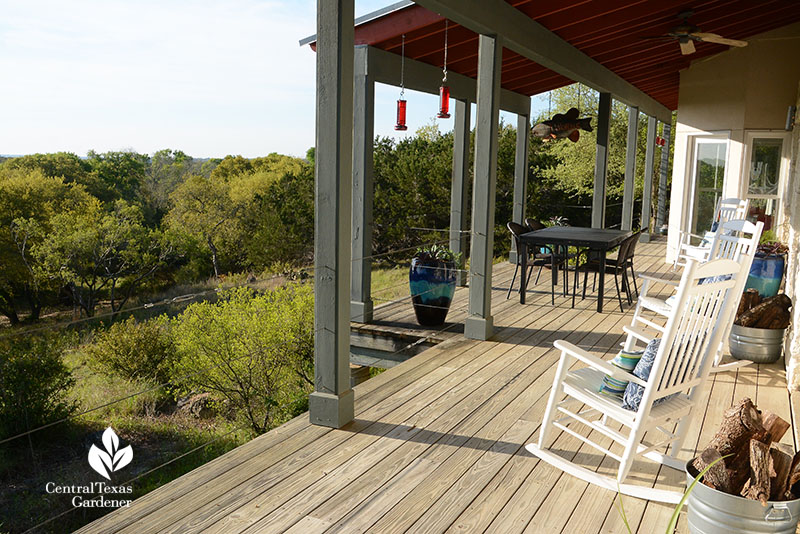
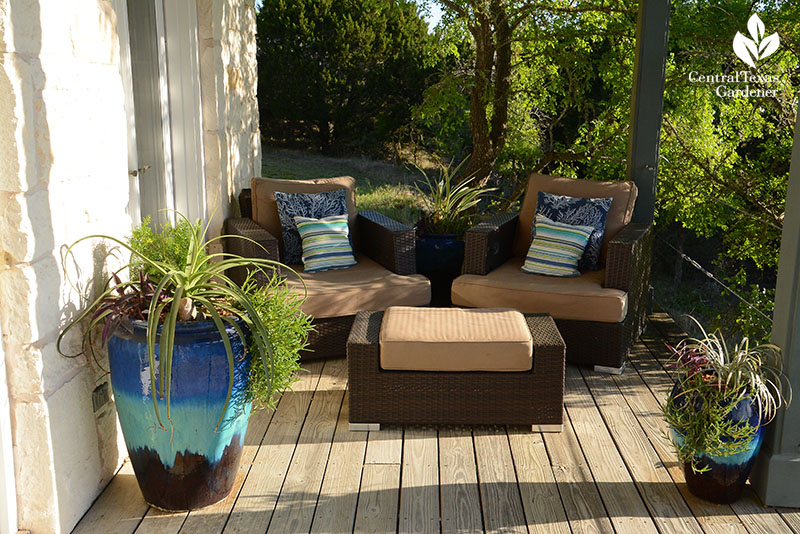
Confident hummingbirds, after feeding on native plants, are happy to grab a bonus drink with the family.
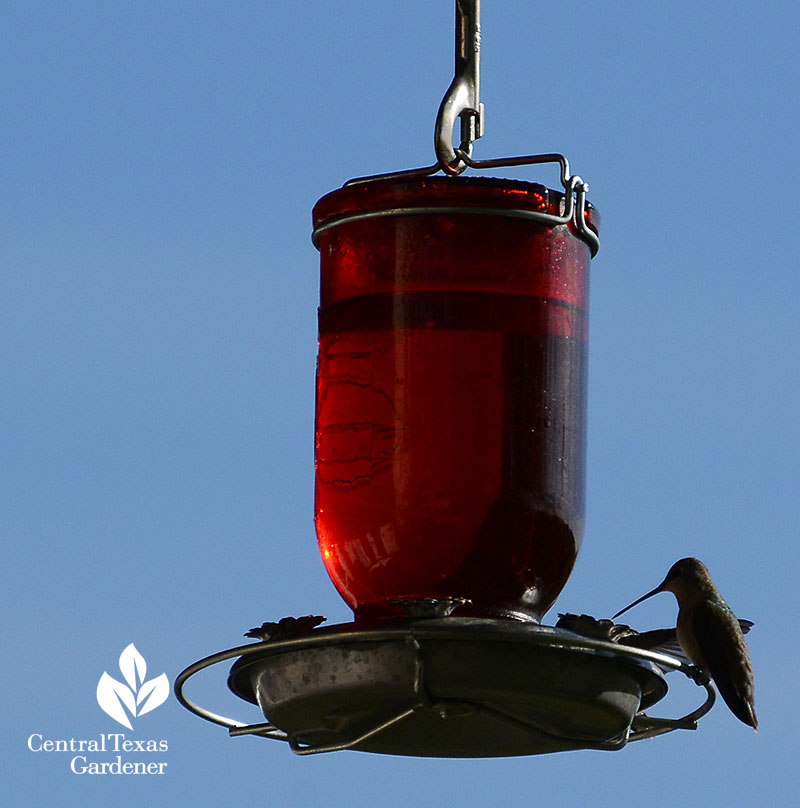
Since deer AREN’T so eager to join them, the Gillums include tasty temptations in their step-side container garden.

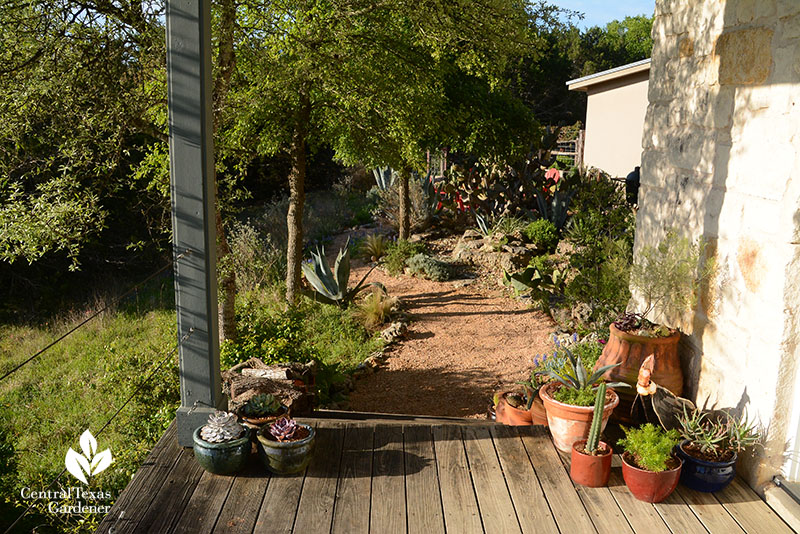
The front yard’s the family playground where their games include watching the wildlife. So, they haven’t manicured or cleared brush from under the oaks, since that’s where deer nurture their fawns.
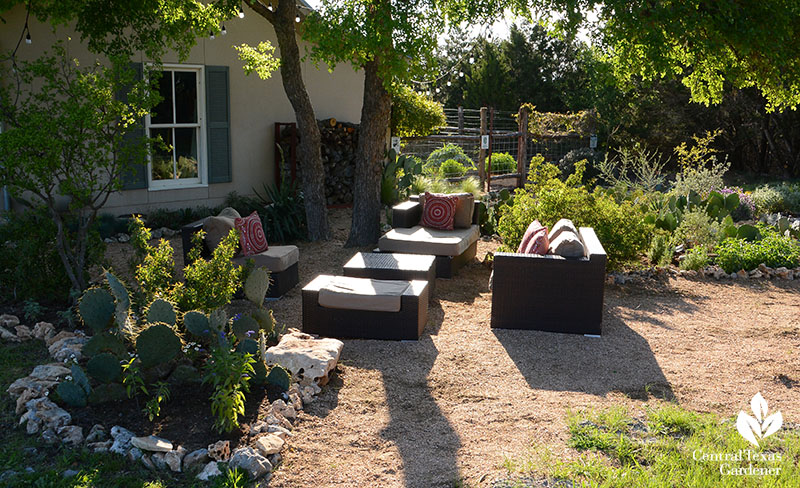
As lawyers, Leah and Jon log many hours behind keyboards, so they make family time outdoors a priority. Problem-solvers both, they bring two dimensions to home and garden collaboration.
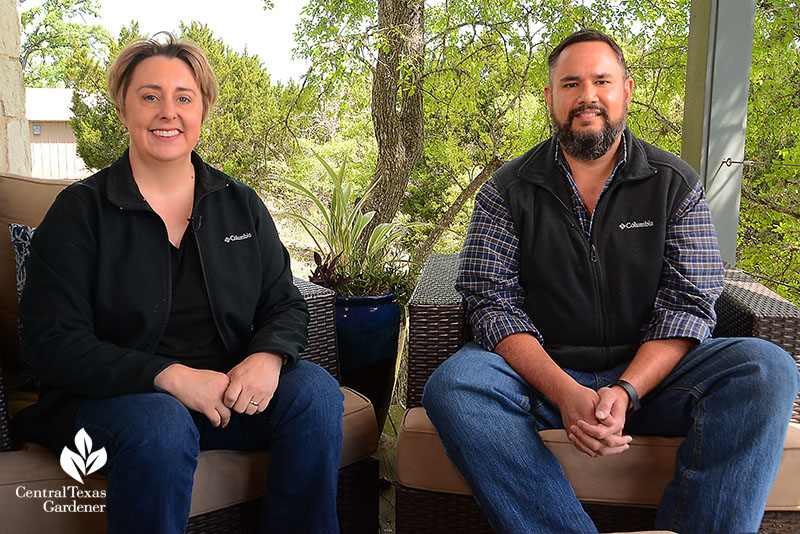
Actually, make that four. Grant and Nora’s youthful voices and perspectives lead the future.
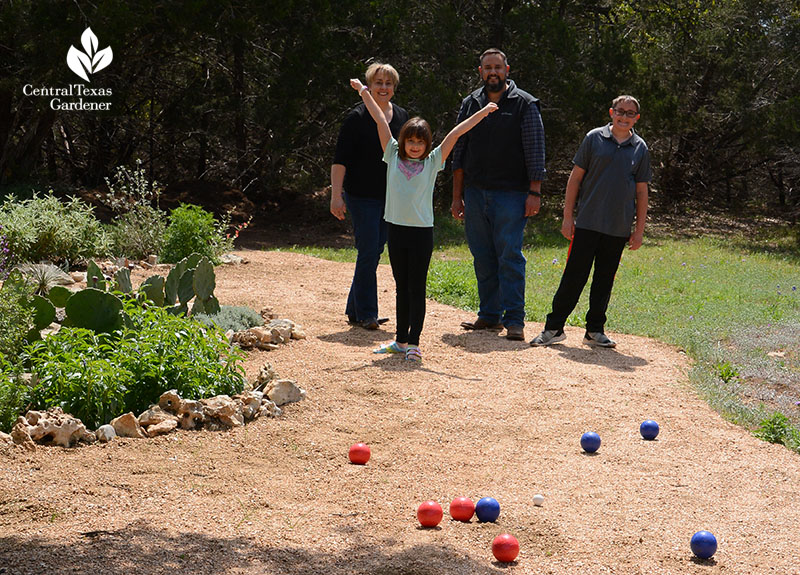
Watch now!
Thanks for stopping by! See you next week, Linda

